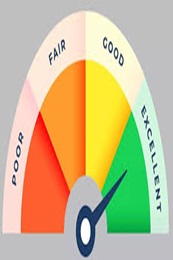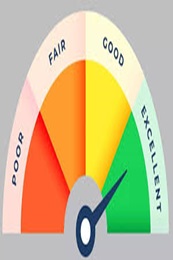Consider These Tax-Saving Instruments and Save on Your Tax Outgo
April 15, 2025

With every financial year-end comes the frantic rush to minimize tax liabilities. Indian taxpayers, whether salaried professionals or business owners, often find themselves navigating a maze of tax-saving instruments. The good news? There are strategic ways to not only reduce your tax burden but also grow your wealth.
Under Section 80C and other provisions of the Income Tax Act, 1961, various tax-saving investments can help you save up to ₹1.5 lakh per year. But which options provide the best mix of safety, returns, and liquidity? Let’s explore the most effective instruments for tax savings in 2025, including fixed deposits (FDs) and home loans—two of the most reliable choices.
1. Tax-Saving Fixed Deposits: A Safe Haven for Investors
Why FDs Are an Excellent Tax-Saving Option?
Tax-saving Fixed Deposits (FDs) remain a preferred choice for conservative investors seeking assured returns and tax benefits. Banks and NBFCs offer these deposits with a lock-in period of five years, making them an attractive option under Section 80C.
Key Features of Tax-Saving FDs in 2025:
- Tax Deduction: Investment up to ₹1.5 lakh qualifies for deduction under Section 80C.
- Higher Interest Rates: Banks like Ujjivan Small Finance Bank offers higher FD rates. Since your investment is parked for 5 years, you get the opportunity to earn more at the time of maturity – thanks to the power of compounding.
- Risk-Free Investment: Unlike the equity market, FDs are not subject to market fluctuations, offering guaranteed returns.
- Mandatory Lock-In: The five-year tenure ensures disciplined savings.
- Taxation on Interest: While investment enjoys tax benefits, the interest earned is taxable as per the investor’s income slab.
Who Should Invest in Tax-Saving FDs?
- Salaried individuals looking for safe and predictable returns.
- Retirees or conservative investors who prefer capital preservation over high-risk investments.
2. Home Loan Tax Benefits: The Ultimate Wealth Creation Tool
Why Home Loans Are a Tax-Saving Goldmine?
For many, purchasing a home is more than just an emotional decision—it’s a tax-efficient financial strategy. The Income Tax Act offers multiple deductions on both principal and interest repayment, making home loans one of the most powerful tax-saving instruments.
Home Loan Tax Benefits You Must Know:
| Section | Deduction Type | Maximum Deduction (₹) |
| Section 80C | Principal repayment | ₹1.5 lakh |
| Section 24(b) | Interest on home loan | ₹2 lakh |
| Section 80EE | Additional interest (first-time buyers) | ₹50,000 (if eligible) |
| Section 80EEA | Additional interest (affordable housing) | ₹1.5 lakh (if eligible) |
Do you have a home loan but fall into the new tax regime? You can still claim tax exemption on home loan interest payments for let-out properties. Need more information? We’ve an entire blog on home loan tax benefits.
Key Benefits of Home Loan Tax Deductions
- The combined benefits under Sections 80C and 24(b) can reduce taxable income by up to ₹3.5 lakh annually.
- First-time buyers under Pradhan Mantri Awas Yojana (PMAY) can avail of additional subsidies. The newly launched PMAY 2.0 (Urban) extends the subsidy benefits.
- The home loan EMI essentially acts as a forced savings tool, building a valuable asset over time.
Who Should Opt for a Home Loan?
- Individuals planning long-term financial security.
- Taxpayers in the highest tax bracket who can leverage deductions to reduce taxable income significantly.
- First-time homebuyers seeking additional tax relief under Sections 80EE and 80EEA.
3. Other Popular Tax-Saving Investments in 2025
Apart from FDs and home loans, taxpayers can explore the following options for tax deductions:
a) Public Provident Fund (PPF)
- Offers tax-free interest and EEE (Exempt-Exempt-Exempt) benefits.
- Tax deduction up to ₹1.5 lakh under Section 80C in a financial years.
- The current PPF interest rate is 7.1% (subject to government revisions).
- Ideal for individuals seeking long-term, compounding growth with zero tax liability.
b) Employee Provident Fund (EPF) & Voluntary Provident Fund (VPF)
- Salaried employees contribute 12% of their basic salary, which is tax-exempt under Section 80C.
- VPF contributions beyond EPF can boost retirement savings.
c) National Pension System (NPS)
- NPS provides additional tax deduction of ₹50,000 under Section 80CCD(1B).
- Market-linked returns with the potential for higher growth compared to traditional instruments.
- Suitable for long-term retirement planning.
- Sukanya Samriddhi Yojana (SSY)
- Designed for parents of girl children, offering a high interest rate (~8%).
- EEE tax status: Deposits, interest, and maturity proceeds are fully tax-free.
- Tax deduction up to ₹1.5 lakh under Section 80C of the Income Tax Act.
d) Sukanya Samriddhi Yojana (SSY)
- Designed for parents of girl children, offering a high interest rate (~8%).
- EEE tax status: Deposits, interest, and maturity proceeds are fully tax-free.
- Tax deduction up to ₹1.5 lakh under Section 80C of the Income Tax Act.
e) Life Insurance Premiums
- Premiums paid for life insurance policies qualify for deductions under Section 80C.
- However, ensure the annual premium is below 10% of the sum assured for tax benefits.
f) Equity Linked Savings Scheme (ELSS)
- Potential higher returns in the long term
- Lock-in period of 3 years
- Market-linked product, hence volatile returns
- Tax deduction up to ₹1.5 lakh under Section 80C of the I-T Act
- Subject to LTCG tax
Choosing the Right Tax-Saving Investment in 2025
With multiple options available, selecting the best tax-saving instrument depends on factors like risk appetite, liquidity needs, and financial goals. Here’s a quick comparison:
| Investment | Risk Level | Lock-in Period | Returns | Tax Treatment |
| Tax-Saving FD | Low | 5 years | Up to 7.20% p.a.* | Interest taxable |
| Home Loan | Low | Varies (generally up to 20 years) | N/A | Interest deductible |
| PPF | Low | 15 years | 7.1%
| Tax-free |
| EPF/VPF | Low | Until retirement | 8.15% | Tax-free |
| NPS | Medium | Until 60 years | 9%-12% (market-linked) | Partially taxable |
| ELSS (Mutual Funds) | High | 3 years | 12%-15% (market-linked) | LTCG tax applicable |
*Data as on 24 February 2025
Disclaimer: Mutual Fund investments are subject to market risks, read all scheme related documents carefully.
Final Thoughts
Strategic tax planning is more than just meeting deadlines—it’s about maximizing returns while minimizing tax outgo. Whether you prefer the safety of tax-saving FDs, the wealth-building potential of home loans, or high-growth options like ELSS and NPS, the right mix can ensure financial security.
With the financial year-end approaching, now is the time to evaluate your tax-saving investments. Make informed decisions and let your money work for you—both in terms of tax efficiency and wealth creation.
FAQs
1. What is the maximum tax deduction I can claim using tax-saving investments?
Under Section 80C, you can claim up to ₹1.5 lakh annually through instruments like tax-saving FDs, PPF, EPF, life insurance, and home loan principal repayment. Additionally, home loan interest deductions under Section 24(b) can reduce taxable income by up to ₹2 lakh, and NPS contributions under Section 80CCD(1B) offer an extra ₹50,000 deduction.
2. Are tax-saving fixed deposits better than ELSS for tax-saving purposes?
Tax-saving FDs are low-risk instruments with guaranteed returns but have a five-year lock-in period and taxable interest. ELSS (Equity Linked Savings Scheme) funds, on the other hand, offer market-linked returns (~12%-15%), a shorter three-year lock-in period, and LTCG tax (10% on gains exceeding ₹1.25 lakh). If you have a higher risk appetite and seek better post-tax returns, ELSS is a better option.
3. Can I claim tax benefits on both the principal and interest of a home loan?
Yes. The principal repayment qualifies for a deduction under Section 80C (up to ₹1.5 lakh per year), while the interest component is deductible under Section 24(b) (up to ₹2 lakh annually for a self-occupied house). If you’re a first-time homebuyer, you may get additional benefits under Section 80EE (₹50,000) or 80EEA (₹1.5 lakh for affordable housing).
4. What happens if I withdraw my PPF investment before 15 years?
PPF has a mandatory 15-year lock-in period, but partial withdrawals are allowed from the seventh year onwards under specific conditions such as medical emergencies or higher education. If you need early liquidity, you can take a loan against your PPF balance from the third to the sixth year at a nominal interest rate. However, premature closure is permitted only under exceptional circumstances.
5. Is the interest earned on tax-saving FDs tax-free?
No. While the principal amount invested in a tax-saving FD qualifies for a deduction under Section 80C, the interest earned is taxable as per your income slab. If your total interest income exceeds ₹40,000 (₹50,000 for senior citizens), banks deduct TDS (Tax Deducted at Source) at 10%. However, if your total income is below the taxable limit, you can submit Form 15G/15H to avoid TDS deduction.
6. Can I claim tax benefits on a joint home loan?
Yes. If you have a joint home loan, each co-borrower who is also a co-owner can separately claim deductions on both the principal and interest components. Under Section 80C, each co-owner can claim up to ₹1.5 lakh, and under Section 24(b), each borrower can claim up to ₹2 lakh on interest payments. This makes joint home loans an excellent tax-saving strategy for spouses or family members.
7. How does the NPS tax benefit work, and is it a good investment?
The National Pension System (NPS) offers triple tax benefits:
- Deduction under Section 80C (up to ₹1.5 lakh).
- Additional deduction under Section 80CCD(1B) (₹50,000 beyond 80C).
- Employer contributions up to 10% of salary (14% for government employees) are tax-free under Section 80CCD(2).
NPS is a market-linked retirement investment with equity and debt exposure, making it suitable for long-term wealth creation. However, 60% of the corpus is tax-free at maturity, while 40% must be used to purchase an annuity (which is taxable).
8. Which tax-saving option is best for risk-averse investors?
For investors who prefer stability and guaranteed returns, the best tax-saving options include:
- Tax-Saving Fixed Deposits (5-year lock-in, taxable interest).
- Public Provident Fund (PPF) (15-year lock-in, tax-free returns).
- Employee Provident Fund (EPF) (for salaried individuals).
- Sukanya Samriddhi Yojana (SSY) (for girl children, high tax-free returns).
These options provide capital safety while offering tax benefits under Section 80C.
Latest Blogs

Telangana Housing Board & KPHB Colony: A Guide to Affordable Urban Housing in Hyderabad
March 14, 2025
As Telangana continues its rapid urbanisation journey, two key housing entities—Telangana Housing Board (THB) and Kukatpally Housing Board Colony (KPHB)—have played critical roles in shaping the state's real estate ecosystem.

Does Checking CIBIL Score Frequently Lower Your Credit Points?
April 07, 2025
Imagine you're planning to apply for a home loan, a credit card, or even a car loan. Naturally, you want to ensure your CIBIL score is in good shape before proceeding.

Explained: Can NRIs Buy an Agricultural Land in India?
April 03, 2025
Real estate investment is often a top priority for Non-Resident Indians (NRIs) looking to retain strong financial ties to India.

How to Improve Your CIBIL Score from 600 to 750: A Step-by-Step Guide
April 02, 2025
Your CIBIL score is like your financial reputation—banks check it before approving loans or credit cards. If your score is hovering around 600, you might face difficulties in securing credit or may get loans with higher interest rates.

What Happens When You Leave Your Savings Account Unused?
April 01, 2025
Imagine waking up one day to find that your hard-earned money is locked away and inaccessible. Sounds stressful, right? This is precisely what happens when you leave your Savings Account inactive for too long.



